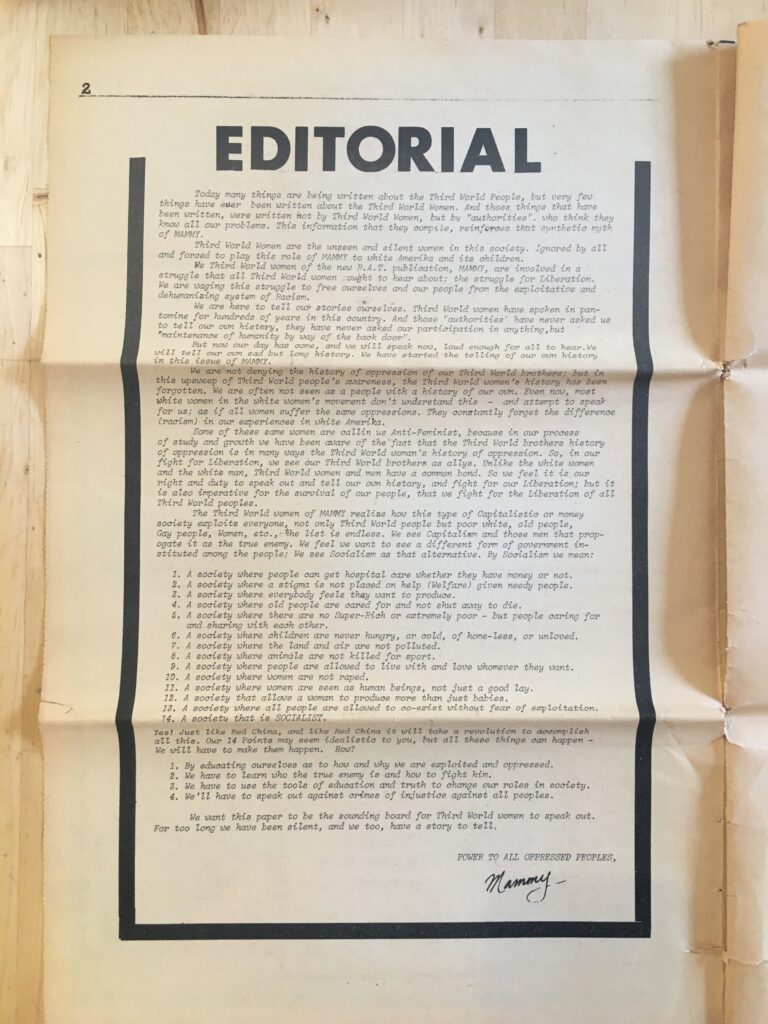New collection highlight: Mammy, a Third World Women’s Publication
August 21, 2021 by

While our collection of underground newspapers includes many issues of RAT, including several related to the women’s takeover of the newspaper, we were excited to recently receive a copy of the October 1972 issue of MAMMY, produced by RAT.

The editorial inside the front cover explains more about the newspaper:
Today many things are being written about the Third World People, but very few things have ever been written about the Third World Women. And those things that have been written, were written not by Third World Women, but by “authorities” who think they know all our problems. This information that they compile, reinforces that synthetic myth of MAMMY.
Third World Women are the unseen and silent women in this society. Ignored by all and forced to play this role of MAMMY to white Amerika and its children.
We Third World Women of the new R.A.T. publication, MAMMY, are involved in a struggle that all Third World Women ought to hear about: the struggle for Liberation. We are waging this struggle to free ourselves and our people from the exploitative and dehumanizing system of Racism.
The editorial goes on to list a series of fourteen points that the authors aim for, including “a society where people can get hospital care whether they have money or not” and “a society where all people are allowed to co-exist without fear of exploitation.”

A centerfold provides an illustration of Angela Davis with the following quote from James Baldwin:
to angela…
…we must fight for your life as though it were our own–which it is–and render impassible with our bodies the corridor to the gas chamber. for, if they come for you in the morning they will be coming for us that night.

A “For the People” page near the end features free classified ads for movement organizations, including one from the school of library science of Louisiana State University, stating:
The School of Library Science of Louisiana State University welcomes information on “Womanhood Media.” Specifically what images the topic evokes? Problems and solutions concerning movement publications in public libraries.

The back cover of the newspaper reveals that it was printed with equipment at Greenpoint Print Shop, a women’s collective print shop that printed movement material from the late 1960s through late 1972. [1]

Stop by the archive during our open hours to take a look at this item; find it in the Newspapers box marked “M.”
- “Biographical Note,” Guide to the Ina Clausen Papers, Center for Brooklyn History, Brooklyn Public Library.